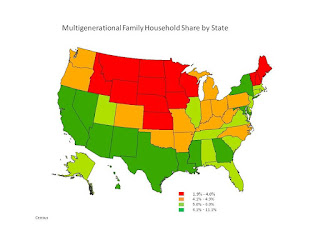Breastmilk versus formula. One of the biggest debates and
hottest issues between mothers. In my experience, the loudest and often most
opinionated voices are the breastfeeding advocates. So much so that mothers who
formula feed are often ostracized and shamed for daring to feed their precious
child such garbage. But is it really garbage? As a mother who tried to
breastfed and failed, it was heartbreaking to turn to formula in order for my
daughter to thrive. Does it really matter? I will discuss the pros and cons of
bother breastmilk and formula as well as personal experiences and thoughts on
each.
There have been many studies which claim that breastmilk is
the only healthy option. Breastmilk is touted as the great elixir to help your
child be smart and healthy. According to one article, it is a classic
chicken-and-egg dilemma (Tatar, 2016). Mothers who breastfeed are usually more
educated and have higher IQs and less likely to smoke and other harmful
activities. They also tend to live in areas where the exposure to illness is
less. Whereas mothers who tend to use formula are poorer and live in areas
where the risk for illnesses is higher. Are the breastfed children’s IQs higher
and their health better due to the breastmilk or the enriched environment? In
Tatar’s article, he discusses a study in which two groups of moms were studied.
One group received extensive breastfeeding support and education and the other
group did not. At the 3 month, mark the group which received extensive support
were still exclusively breastfeeding (43%) while the other group only 6% were
still breastfeeding. Nine percent of the breastfed babies had at least one
illness with diarrhea versus 13% of the formula fed babies. Three percent of
the breastfed babies had eczema versus 6% of the formula fed babies. And there
was no difference between the breastfed babies and the formula fed babies in
terms of the number of common colds. The conclusion? Breastfed babies do suffer
less from illness than formula fed babies; however, it’s by a relatively small
difference.
There are many pros and cons with breastfeeding. First pro
is it’s free with no bottles to wash and prepare. Second, breastfeed can help
the mother burns calories and lowers her risk for certain cancers. Third,
breastmilk can help strengthen the baby’s immune system and lowers his or her
risk of SIDS. The first cons is that it’s time consuming. A baby will feed
every 2 to 3 hours for an average of 20 to 45 minutes. That’s an average of 35
hours a week! Second, only mom can feed (unless she pumps). Moms must worry
about medications, foods and drinks she consumed that can pass through her
breastmilk to the baby. Third, mothers can develop mastitis, an infection of
the breast tissue from clogged milk ducts. It is extremely painful and can
result in hospitalization and surgery if not treated quickly. Lastly, there is
no way to really tell how much the baby is eating with breastfeeding unless, of
course, it is pumped. The American Academy of Pediatrics (AAP) recommends
exclusive breastfeeding for the first six months and encourages continuing
breastfeeding until one year of age as long as the mother and child are
willing. I think the key word is “willing” and I would add “able.”
There are many pros and cons to formula too. First pro,
anyone can help feed the baby at any time which can help mom rest or even take
a shower. Second, feedings can be easily scheduled, tracked and controlled as
most formula fed babies do not need to eat as often. Third, Moms do not need to
watch her own consumption of medications, foods and drinks. The biggest con for
formula is cost. A can of formula, on averages, costs about $21 and a baby can
easily go multiple cans in a week or so. Second, time to prepare the formula.
However, to me, this isn’t really a con because water can be poured ahead of
time and you simply need to add the formula powder and mix. Or what I did, I
prepared the formula and store it in the refrigerator until my daughter was
ready to eat. And no, I didn’t need to warm it up because despite common
belief, it doesn’t have to be warm. My daughter actually preferred it cold. Third,
formula doesn’t provide the same immunity benefits as breastmilk. Lastly, some
babies may need special and more expensive formula like soy-based or lactose
free formulas.
My sister is the mother of an 11 ½ month old boy and she has
been able to exclusive breastfeed. For this blog, I asked her experience with
breastfeeding, education and support she was given throughout the entire
process. The biggest pro for her is that breastmilk is free. She also enjoys
the bonding and connection time with her son. “There’s something about the way
baby looks up at you” (personal interview August 27, 2017). She likes the
health benefits for both herself and her son. Her son has not been sick.
Although, many women claim breastfeeding helped them lose the pregnancy weight,
it didn’t for her. Her biggest con is pumping at work. She often stressed out
when she was only pumping a couple ounces at a time and was worried her son
wasn’t getting enough to eat. In terms of support, she had a lot of support
from the hospital both prenatal and postnatal as well as online communities and
friends who have breastfed in the past. She admits that the first few weeks
were difficult. Pain and discomfort were common as both she and her son found a
position hold they both felt comfortable with. She had a few issues with
blocked ducts but many home remedies worked for her to clear the issue. “I
think education and support is key. If you don’t have that you’ll have a hard
time getting through it” (personal interview August 27, 2017).
I dreamed of being a mother practically my entire life. I
would cuddle my baby dolls and pretend to breastfeed them as I saw my mother do
with my younger siblings. You can imagine my devastation when it was extremely
difficult for me and my daughter. I struggled for six weeks to breastfeed. One
day at my daughter’s doctor’s appointment, when she had dropped weight again,
her doctor recommended I start supplementing with formula. I was heartbroken
and felt like such a failure that I couldn’t provide breastmilk for my baby. So
I started formula and my daughter thrived. She was a happy and healthy baby.
She has only had one ear infection her entire life. She rarely gets sick and
when she does, it usually doesn’t last for long. She is extremely smart and
quick witted. The things she says and does often amaze me. She is bright and
picks up things quick. I was willing to breastfeed for as long as I could, I
just wasn’t able. I CANNOT stand the shame mothers get for using formula
especially from women who do not know their story or their reasons for choosing
to do so. I do not regret my decision to stop breastfeeding and start formula
because ultimately it is about what is best for my child and me. I think
mothers are often forgotten in the breastfeeding-formula debate.
In conclusion, in my opinion, ultimately fed is best. If you
can breastfed and can meet its challenges, great! I’m proud of you and keep up
the great work. However, if you tried and cannot breastfeed for whatever
reason, feed your baby formula with confidence. Your child can still be healthy
by providing a healthy environment. Your child can excel in school when you
provide an enriching environment by reading, exploring the world around you and
encouraging your child to learn all they can. There is so much in life which is
influence by many factors that just one doesn’t determine a lifetime. Education
and support are a major key. The difference between my sister’s experience and
my own is support. I only got support while I was in the hospital but once I
was sent home, I didn’t get any information about further support. Hospitals
need to get better at providing this information for moms. And moms, if you do
decide that despite education and support, that you cannot breastfeed, it’s
okay. Only you can decide what’s best for you and your baby. Don’t let anyone
else, bully you into thinking you are doing something wrong or dangerous simply because they do not agree. The last picture is one of my daughter and my nephew. Both are happy and healthy children. One was formula fed and one was breastfed. If I didn't tell you who was fed what, would you be able to tell me? You couldn't. So don't judge a child's future by the method his or her parents chose to feed him or her. There are too many factors that go into a child's health and future than just breastmilk or formula.
References
Tatar, Emiliano Breastmilk
vs Formula: What do the studies really tell us? Philly.com April 20, 2016.
Retrieved August 27, 2017.






























